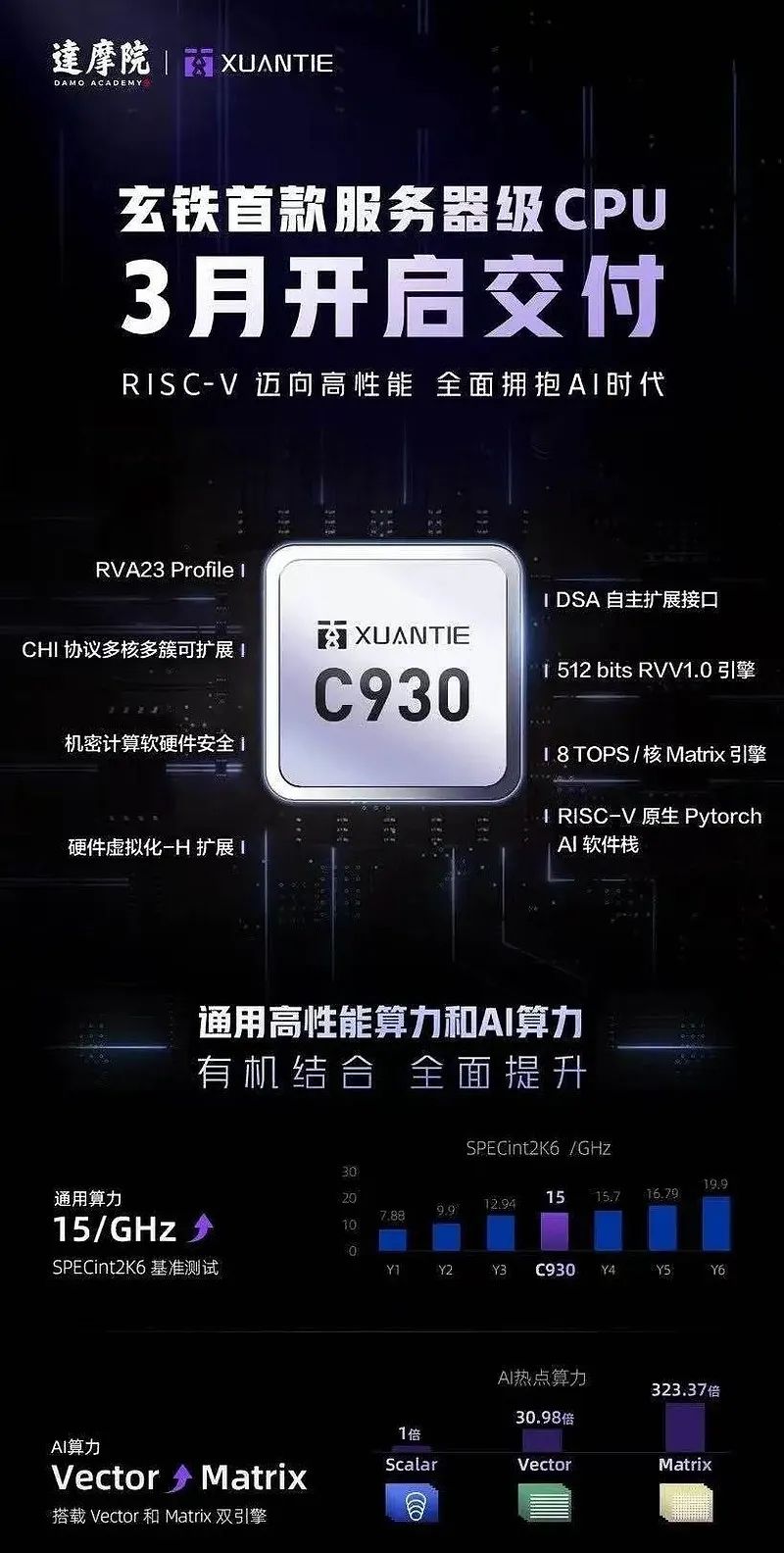At the end of the 18th century, the roar of Watt’s steam engine shattered the tranquility of hand-spinning wheels, leading to the rapid collapse of the textile guilds that had been monopolized by the nobility. Two centuries later, a similar transformation is unfolding. The open-source DeepSeek has broken through the high training costs of OpenAI’s GPT-4 digital “Great Wall,” marking the first fierce confrontation between open-source and closed-source, ultimately culminating in a victory for open-source.Fifteen years ago, a new instruction set was born at the University of California, Berkeley, consisting of fewer than 50 instructions, known as RISC-V.To ensure complete openness, RISC-V adopts the BSD License open-source protocol. As a free and open instruction set architecture, it challenges the closed model of traditional ISAs, bringing hope for “architectural equality” to chip developers worldwide.Recently, a report from Reuters ignited enthusiasm in the RISC-V chip sector. China plans to issue guidance for the first time, encouraging the nationwide use of open-source RISC-V chips. Although the news has not been officially confirmed, the underlying logic and strategic significance have attracted widespread market attention. As an open-source and free CPU instruction set architecture, RISC-V is sparking a revolution in chip technology globally, with China at the forefront of this revolution.What is RISC-V?In simple terms, RISC-V is an open-source instruction set architecture (ISA) based on the principles of Reduced Instruction Set Computing (RISC).Unlike traditional instruction set architectures, RISC-V is completely open-source, simple in architecture, and particularly easy to extend. It is akin to an open world of LEGO bricks, where anyone can freely combine and customize chips according to their ideas, bringing countless possibilities for innovation and development in chip technology.At the first Xuantie RISC-V Ecosystem Conference, Academician Ni Guangnan from the Chinese Academy of Engineering pointed out: “It is no exaggeration to say that RISC-V is currently the most popular architecture in China’s CPU field. The Chinese chip industry and the entire chip ecosystem will increasingly focus on the RISC-V architecture.” Indeed, the development of RISC-V is accelerating, as he stated, driven by collective efforts.

Outlook: Opportunities and Challenges AheadLooking ahead, there are numerous opportunities in the RISC-V chip industry chain. With the rapid development of emerging technologies such as artificial intelligence, the Internet of Things, and 5G communications, the demand for chips has become diverse and highly personalized. The customizable and flexible characteristics of RISC-V chips enable them to better meet these needs, leading to broader applications in emerging fields. Policy support will also provide strong backing for the development of the RISC-V chip industry, as the government promotes an independent and controllable chip industry, with RISC-V chips likely to receive more policy support and resource investment as a representative of open-source architecture.However, the RISC-V chip industry chain also faces several challenges. Although the RISC-V ecosystem is developing rapidly, compared to traditional instruction set architectures, its software ecosystem is still not fully developed, with relatively few software tools and applications, which somewhat limits the application range and promotion speed of RISC-V chips. In the field of high-performance computing, RISC-V chips still lag behind mature architectures like x86 and ARM in performance, necessitating further technological advancements and design optimizations to meet high-performance computing demands.International competition is also intensifying, as countries around the world actively position themselves in the RISC-V chip industry. How to stand out in this competition and occupy the technological and market high ground is a significant challenge for the RISC-V chip industry.ConclusionThe development of RISC-V over the past 15 years has been captivating, with its ups and downs. In the field of chip architecture, which has established a strict order over a century, there has never been a story that breaks conventions like “nobility and commoners are not born into their roles.” In the high-tech industry, the emergence of disruptive technologies signifies the breaking of barriers for old players.During the launch of the iPhone in 2007, Steve Jobs quoted a statement from Alan Kay, a Turing Award winner in 2003: “Those who truly care about software should build their own hardware.” Now, the open-source RISC-V is moving towards a direction of “openness, collaboration, and inclusivity,” genuinely lowering the barriers to chip design and enabling everyone to have the possibility of “building their own hardware.”Disclaimer: This information does not constitute any investment advice, and investors should not rely solely on this information for decision-making. We strive for accuracy and reliability in this column, but we do not guarantee the accuracy or completeness of this information, nor do we accept any liability for losses arising from the use of this information.